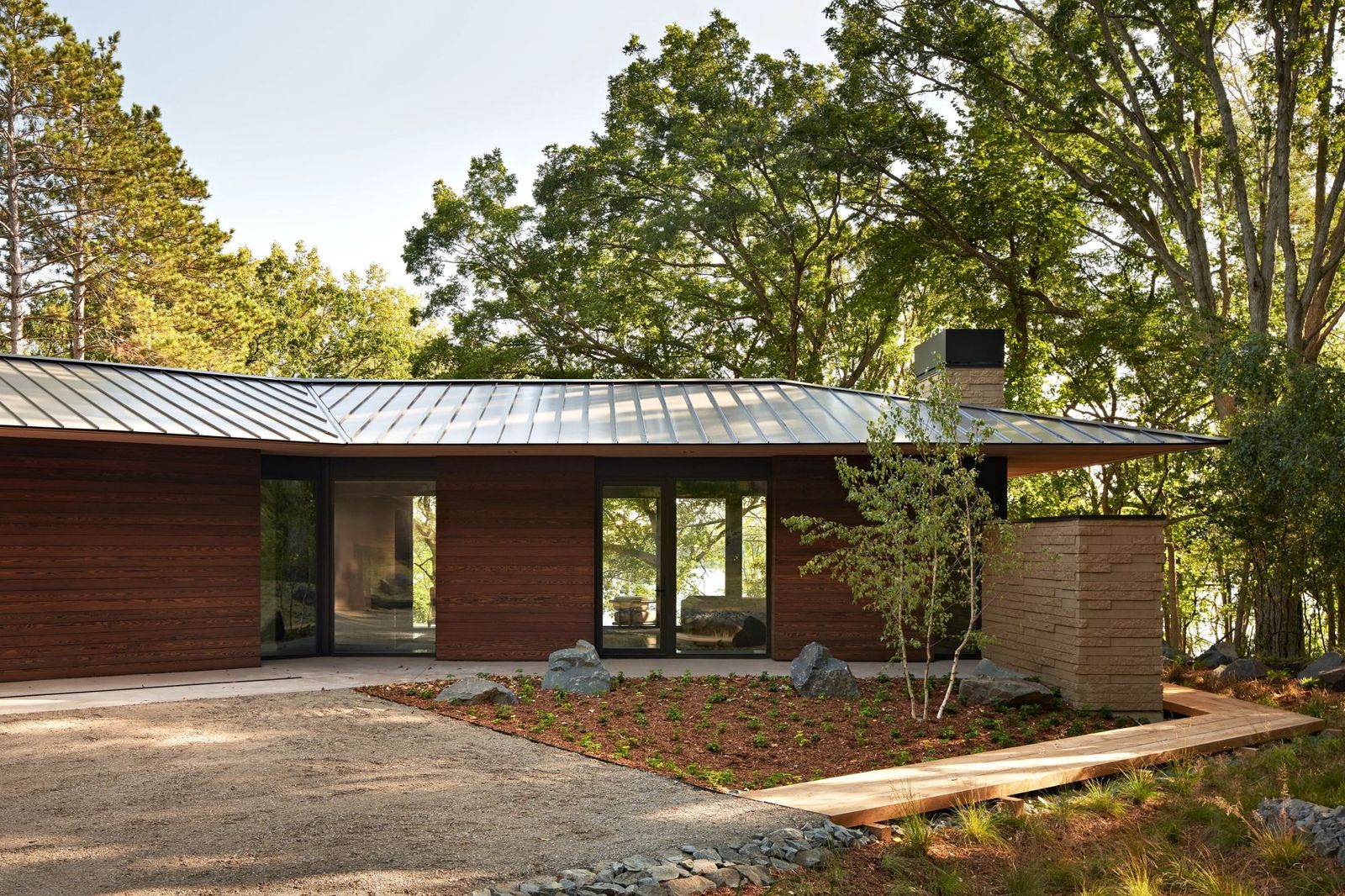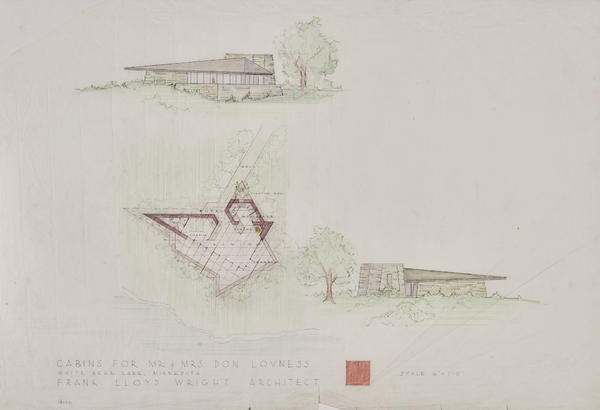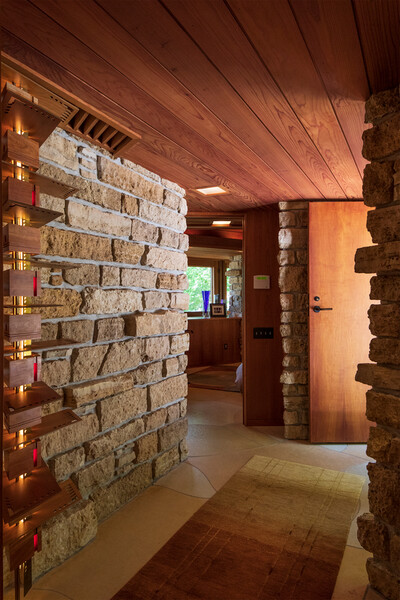After 50 Years, a Frank Lloyd Wright Finally Got Built. Then It Spawned a Sibling.

Two friends in Minnesota brought unused drawings to life before creating a companion home with a rhyming roof and material palette.

Over the course of a seven-decade career and up until his death in 1959, Frank Lloyd Wright was remarkably prolific. He designed more than 1,100 structures, from museums, office towers, hotels, and churches to houses of all sizes and configurations. Not all were realized, but some served as templates for later designs in which the architect refined and adapted themes that sparked his seemingly limitless curiosity.

Bear Run, realized by architect David Uppgren in Marine on St. Croix, Minneapolis, is based on two nearly identical Frank Lloyd Wright designs that were never built: a 1948 plan for the architect’s sister and drawings of a cottage for his friends from 1958.
Photo by Tomy O’Brien Photography
One such project was a 1958 guest house that Wright planned for his friends and clients Don and Virginia Lovness in Stillwater, Minnesota. With its triangulated roof and sharply angled overhang projecting out from one side—Wright had a facility for acute geometries—the drawings for the Lovnesses’ Cottage C were nearly identical to the unbuilt summer home he’d designed a decade before at Taliesin for his youngest sister, Maginel Wright Barney.
Like his 1948 plan for Maginel, the Minnesota home also demonstrated Wright’s penchant for exploring new ideas, says architect Tim Quigley, the co-author of a monograph on the architectural career of Wright’s chief draftsman, John Howe, and a board member of the Frank Lloyd Wright Building Conservancy.

The original drawing for Virginia and Don Lovness’s cabin shows the severity of the roofline, preserved in the built home in Marine on St. Croix.
Image courtesy of The Frank Lloyd Wright Foundation Archives (The Museum of Modern Art | Avery Architectural & Fine Arts Library, Columbia University, New York)

The home’s exterior limestone blocks wrap into its entrance, where Wright’s signature compression technique is in play. The compact space “releases” into a larger, more open space.
Photo by Tomy O’Brien Photography
See the full story on Dwell.com: After 50 Years, a Frank Lloyd Wright Finally Got Built. Then It Spawned a Sibling.
Related stories: